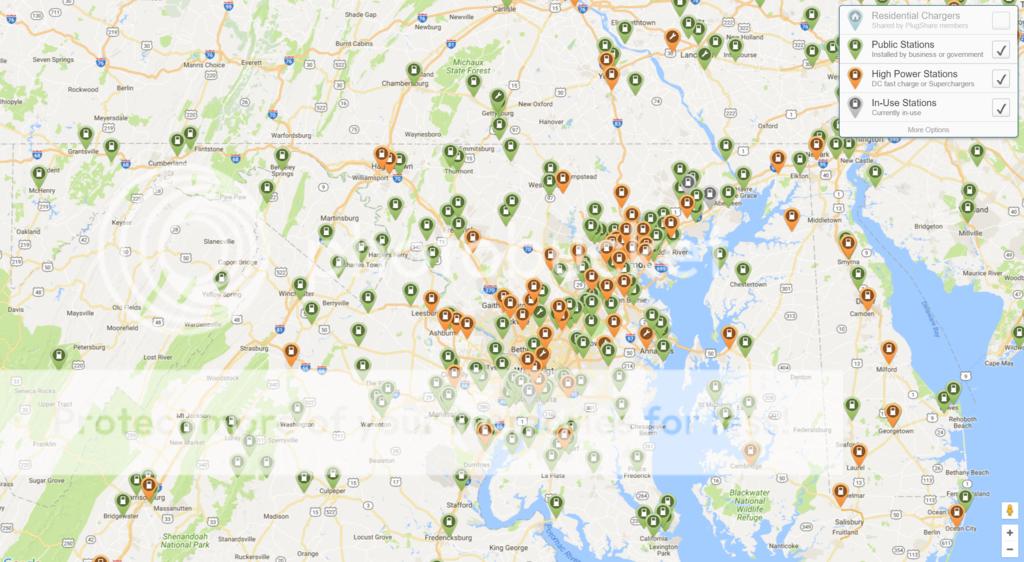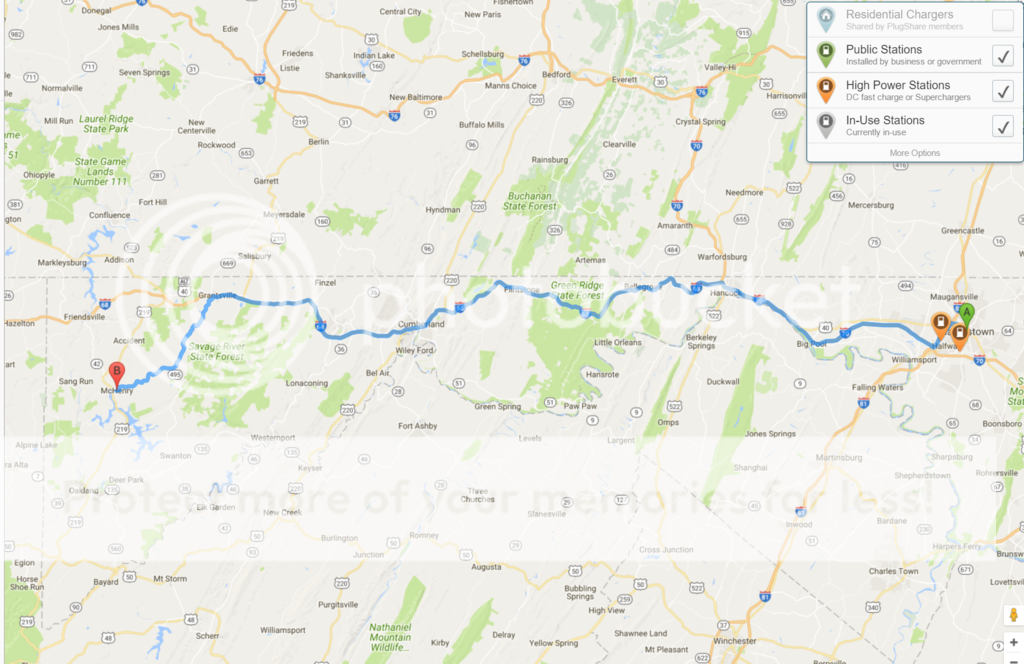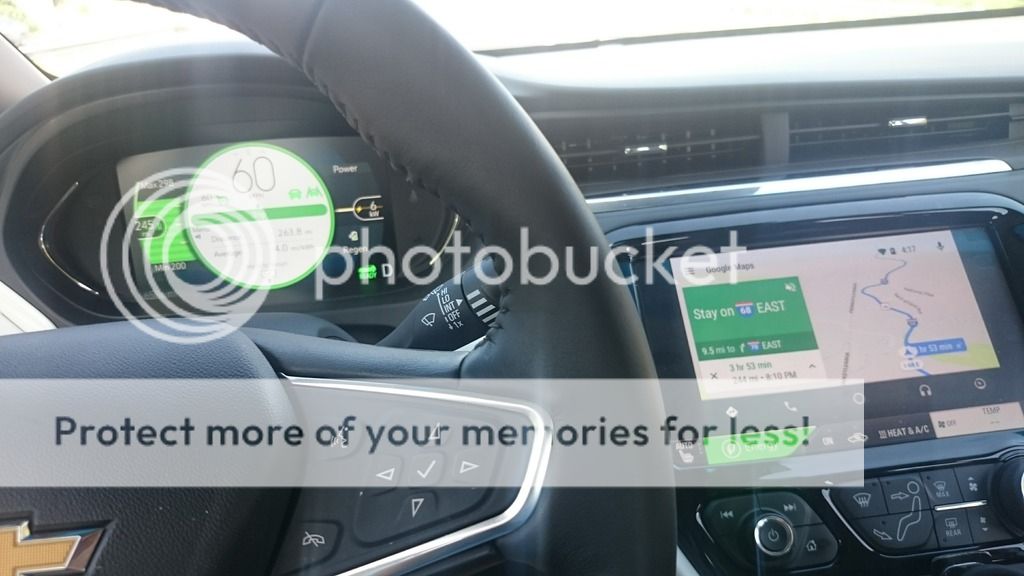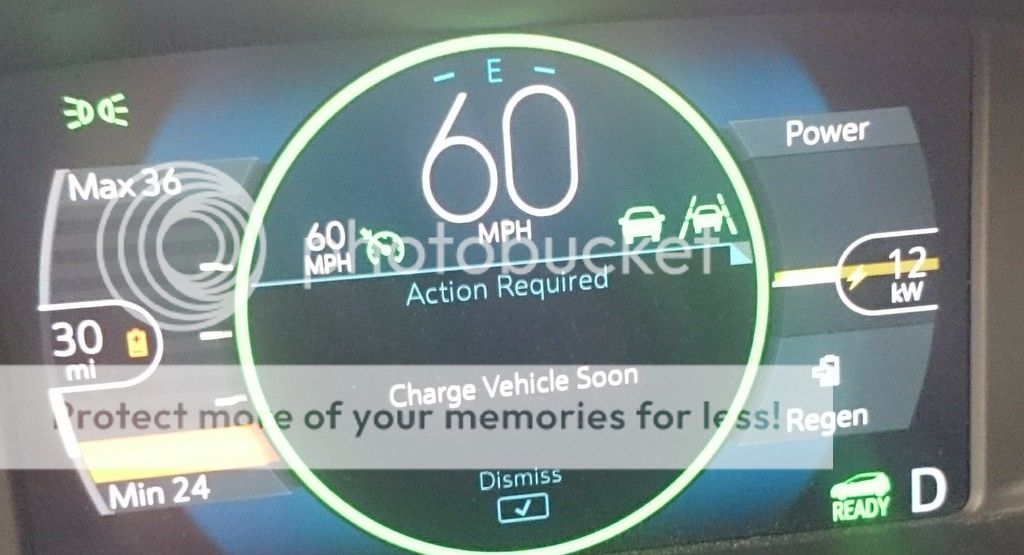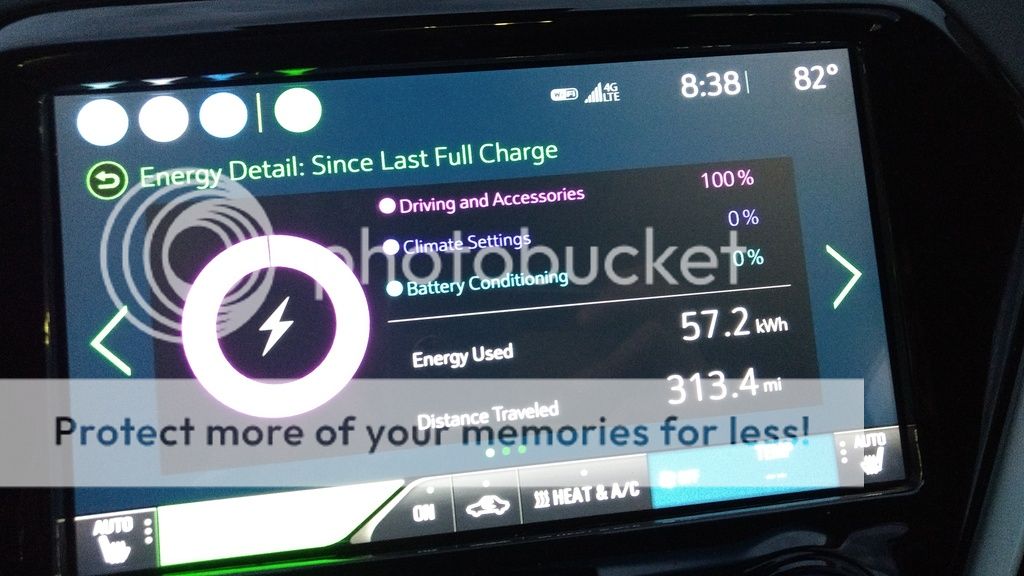 |
| One winterized Bolt |
This past Saturday, my family decided to check out the Koziar Christmas Village in Bernville, PA (might as well rename "SCORCHED EARTH FOR EV CHARGING PA"). The drive to the village was 132 miles one way (264 miles roundtrip), so fast charging stop(s) would be needed. I was actually semi-fretting leading up the the trip, because of the fact the nearest fast charging station to the village was 60 miles away in York, PA.
 |
| 260 miles round trip! |
There is actually a CCS station near Lancaster, PA closer to Bernville, but as it has a 1.0 rating on Plugshare, I decided to write it off as a charging option. There is no L2 charging near Bernville, PA either, so charging while parked at the Christmas village was not an option. I would need to charge at York either on the way up to Bernville, PA OR on the way back home IF I had enough range to make it back to York on the return trip.
 |
| No thanks |
Before beginning my trip, I made sure to pre-heat my Bolt. I actually turned the Bolt on and left the heat run while it was plugged in for about 30 minutes priop to departing so the heater and battery would be up to temp and warmed up. When we actually departed (it was snowing lightly and about 32 degrees), the heat was set to 70 degrees on fan speed setting 1. I had an estimated 196 miles of range after doing a 100% charge. It was theoretically possible for me to eek out enough range so that I only needed to hit the CCS station in York on the way back. I quickly found out that would be impossible.
 |
| Fast charging desert in middle of nowhere, PA |
During the drive up to the PA border, the snow steadily increased in intensity, and the wet roads took a toll on my efficiency. About 50 miles into my trip, I realized I would absolutely have to top off in York on the way up to Bernville, as there was no way I could make it back to York on a single. When I pulled into the station at York, I had about 105 miles of range remaining. While the distance to York from my home is roughly 67 miles, *91* miles of estimated range had been consumed. Due to arriving at the station with 63% of the battery remaining, my "fast" charge was relatively slow due to the Bolt tapering charging rates when the battery is above 50%. For a 29 minute session, I had managed to put 12.6 kWh into the battery, and had "topped off" to 160 miles of estimated range when I departed for Bernville.
 |
| 100A max fast charging station in York, PA |
During the remaining 59 mile drive to the village, it continued to snow. Eventually, snow started sticking to the highway, so traffic slowed considerably for streches on the highway. The slower speeds helped increase my efficiency, however, so all was not a total loss. When we pulled into the parking lot of the christmas village, the range meter stated I had 95 miles left. The ambient temperatures were in the mid 20's when we arrived. We ended up spending about 2.5 hours exploring the village (and 2.5 hours of the Bolt's battery cold-soaking in sub-freezing temps).
 |
| Not optimal conditions |
A little after 8PM, we departed back for the CCS station in York. During the entire 60 mile drive, I had the heat set to 70 degrees, with on and off use of the defroster. When we pulled into the fast charger in York, 29 miles of range/16% battery charge remained. I wanted to top off to about 80 miles so I had a comfortable buffer for the 60 mile drive back home.
 |
| Purdy |
What I DIDN'T expect was the throttled charging rates of my Bolt! Despite having the heat on for the whole hour driving to York, the HV batterty was obviously still too cold to allow for maximum charging rates! I languished at 18-24 kW (or 60-70 amp) rates for the first 20 minutes of charging, resulting in much fewer miles being replenished than I thought. It wasn't until 25 minutes after plugging in did the Bolt finally realize the station's full 100 amp charging rates (or about 35 kW). My stay at the charging station was about 20 minutes longer than I had planned (and MAN that was a long 20 minutes with a cranky wife! Might as well have been an eternity).
After ~45 minutes charging (and 19.3 kWh pumped out by the EVgo station), I had achieved my 80 mile range, and eagerly took off for home. The rest of the trip was rather uneventful, and I arrived back home with around 20 miles of range left.
Looking back on this trip, I realized that driving a Bolt to an EV charging wasteland during a minor snowstorm was probably not the best decision. If I were to repeate this trip again, most likely I would have just taken my Volt and burned some gas and shave about 75 minutes off the travel time I ended up spending extra charging the Bolt. The "too cold HV battery" issue doesn't affect just the Bolt, but all EVs in regards to fast charging, even the much balleyhooed Teslas and their Supercharging network. TeslaBjorn has video blogged about reduced Supercharging rates when the HV battery is too cold. Skip to 4:00 to see Bjorn's Model X struggle to register even 1 kW in the video below.
The Bolt is a mighty fine vehicle, but the cold battery issue I experienced should be something other Bolt owners are aware of before planning a road trip this winter that relies on DC fast charging. As you can see below, while the Bolt can condition the HV battery, it seems that it will only heat (or cool) the battery to keep the battery temperature out of the "danger zones" where the battery can be potentially degraded. Perhaps a "warm HV battery" feature could be implemented by GM so that owners had the option of warming the battery to ensure peak fast charging speeds in cold conditions. It would have been "warmly" welcomed by me this past weekend.
 |
| Final trip stats |



.jpg)



































